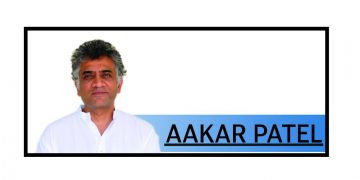SPOTLIGHT NEPAL Dhurjati Mukherjee
The NIDM warning definitely calls for serious concern as the preparedness of the country to deal with any major disaster is quite low
==
BLURB
There is need to reform civil engineering education at the under-graduate level as around 60 per cent of the country falls in regions that are liable to seismic damage. According to an expert of the Geological Survey of India (GSI), retrofitting is the logical option and, as such, this has to be included in the syllabus to make buildings safe
TEXT
The earthquake in Nepal, which had a strong effect in Bihar and UP, calls for an analysis of our country’s preparedness to deal with such natural disasters. Though the destruction is nowhere near Nepal’s — where it was calculated to be 7.9 on the Richter scale and caused death to over 7,500 people on modest estimates — it needs to be pointed out that proper planning to withstand quakes of a little high intensity are missing in the country.
Experts have long indicated that the entire Himalayan region is earthquake-prone as the Indian tectonic plate, which is part of the Indo-Eurasian plate, is moving northward at around 5cm a year. In fact, an international team of scientists found that where the Indian plate slips beneath the Himalayas, a 63km long earthquake rupture on a previously unrecognized fault in western Nepal has been identified. The scientists had cautioned recently in the journal, Nature Geoscience, of “a potential seismic hazard within the interior of the Himalayas” and this may have contributed to the present quake.
Geophysicists are of the opinion that earthquakes typically cause a sudden subterranean shift in the positioning of the continental plates, the relevant one in this instance being the Indian plate. A section of experts has been anticipating an earthquake within a 600km stretch of the Central Himalayas between Kangra in Himachal Pradesh and the Bihar-Nepal border. It is also being anticipated that some of the energy released presently may actually load some incremental strain in the Kumain-Garhwal region of the Himalayas.
The National Institute of Disaster Management (NIDM) and the National Geophysical Research Institute (NGRI) have warned that quakes may hit the sub-continent’s four seismic zones more regularly due to the movement of the Indian plate towards the Eurasian plate. It may be mentioned here that Zone-V, the very severe intensity area, consists of parts of J&K, Himachal Pradesh, Uttarakhand, Raan of Kutch, parts of north Bihar, and the Andaman & Nicobar Islands.
As part of the risk-mitigation efforts, the NIDM paper has put greater emphasis in capacity building. It stated that 27 states and Union Territories are disaster-prone from phenomena like quakes, floods, river erosion, landslides and avalanches. Almost 59 per cent of the landmass is prone to earthquakes of moderate to high intensity. Referring to high risk states, the NIDM warned that “construction in these cities are predominantly not earthquake resistant, regulatory mechanisms are weak, thus any quake striking one of these cities would turn into a major disaster.”
The NIDM warning definitely calls for serious concern as the preparedness of the country to deal with any major disaster is quite low. Records suggest that four major earthquakes have occurred in the Himalayan region – Shillong in 1897 (8.7 in the Richter scale), Kangra in 1905 (8), Bihar-Nepal in 1934 (8.3) and Assam-Tibet in 1950 (8.6).
In recorded history, several great earthquakes have taken place in the Himalayan region, which is seismically one of the most active intra-continental regions of the world. The high seismic activity in this region has been attributed to the on-going geo-dynamic process that has built the Himalayas over the past 40 million years. Therefore, scientists have predicted that earthquakes of greater intensity would continue to occur in the Himalayan region in future also.
In the Himalayan region, it is not only earthquakes that are a matter of concern. The extremely sensitive eco-system of a young mountain requires careful nurturing and not mindless exploitation of its natural resources. An example in this context was the Uttarakhand deluge in June 2013 where thousands expired due to various factors, including unrestricted tourism for which unsustainable infrastructural facilities were built.
Keeping in view the above scenario and also the fact that building collapse causes over 90 per cent of deaths in the event of an earthquake, there is need to evolve specific standards of construction. There is need to reform civil engineering education at the under-graduate level as around 60 per cent of the country falls in regions that are liable to seismic damage. According to an expert of the Geological Survey of India (GSI), retrofitting is the logical option and, as such, this has to be included in the syllabus to make buildings safe.
Apart from this, city planning needs to undergo a thorough change, specially in the risk prone areas. This could be done at an all-India level with experts who could also explore collaboration with Japan, which has a lot of technical acumen in this field. The government needs to conduct its survey and insist on use of construction material which is earthquake resistant.
Earthquakes, as is well-known, are as old as the earth itself and the primeval inhabitants of this planet suffered no less from the natural ravages of this natural phenomenon than we do now. Research and statistical data have shown that about a million earth tremors, heavy and light, occur annually. While most of these are ignorable, there are about twenty major earthquakes which really cause great damage to life and property.
As such, it is very much necessary to economically design any structure capable of resisting earthquakes. For this, a prior knowledge of the science of seismology and the reaction of the various types of earthquakes on different types of structures is essential. This aspect has assumed great importance in India because most of the river valley projects being undertaken are in the Himalayan seismic zone. As the prediction of the location and the magnitude of an earthquake are yet to become a practical reality, it is high time that something more than statistical inference is drawn about the occurrence of quakes. The examples of devastation in many countries like China and Japan bear testimony to the fact that unless a scientific prediction methodology is evolved, the future may witness worse consequences.
At this juncture, it needs to be reiterated that in India experts from the National Geophysical Research Institute (NGRI), Roorkee School of Earthquake Engineering, Indian Institute of Geomagnetism, Geological Survey of India and, of course, NIDM should form a core group to come forward with specific recommendations both regarding the possibility of future earthquakes and measures needed to withstand them. More research about plate tectonics of the Himalayan region and awareness generation in the high risk areas are of vital necessity at this point of time. The Nepal tragedy has sent warning signals, which both the Centre and states can ill afford to ignore. —INFA






































